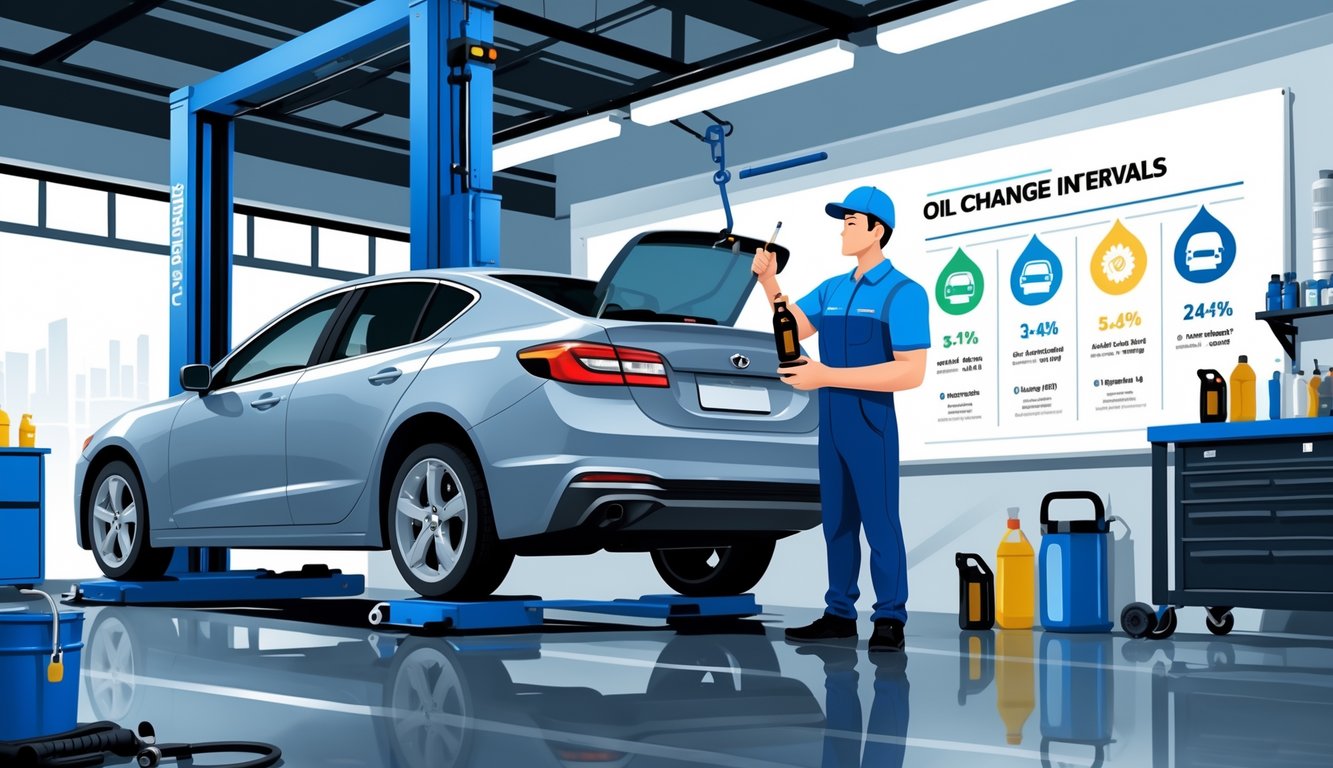
Why Overlooking Recommended Intervals Can Hurt Your Engine
It’s wild how so many smart people—seriously, I know engineers and composers—just never bother with scheduled oil changes. The result? Same every time: their engines get sluggish, noisy, start overheating like they’re mad at you. Not rocket science. Just gunk and wear, totally avoidable.
Engine Sludge and Build-Up
When someone skips oil changes, it’s not just the oil getting darker. It’s turning into this thick, nasty sludge—like, actual goop. “Engine sludge,” if you want to sound official. Even short city trips (guilty) dump fuel residue and water into the oil, says maintenance nerds. If you’re just doing two-mile grocery runs, never letting the engine get hot, it builds up fast.
One time, a tech told me he pulled a valve cover and literally scooped out sludge. That stuff blocks oil passages, chokes camshafts and bearings, and sometimes sets off the check engine light. Synthetics help, but if you ignore intervals, even the best oil breaks down. Miss your changes and your engine’s just swimming in dirty soup. Gross.
Premature Engine Wear
I’m the king of ignoring “change oil soon” warnings. Every time, metal parts start grinding on each other, filter clogs, grit and metal shavings go everywhere. It’s like sandpaper inside your engine. NAPA’s got a whole warning about how this leads to catastrophic wear. Mechanics I’ve talked to say the worst engines they tear down all have the same story: skipped oil changes, scored cams, trashed bearings, bits of metal everywhere.
Why do car manuals hide the important stuff in tiny print? Miss one oil change and suddenly there’s a weird tick at idle. Ignore it, and a year later you’re buying a new engine. And even fancy synthetic oils break down eventually—doesn’t matter what the label says. Metal starts eating metal, and you’re out of luck.
The Role of Oil Type and Oil Filters

Every time someone rolls into the shop, it’s the same debate—synthetic or not, who cares what the manual says, let’s just go with whatever the cousin recommends. People bounce between blends and full synthetics based on random advice. Filters? Nobody wants to pay extra, and then they complain about black oil after 2,000 miles.
Synthetic Oils and Extended Intervals
Synthetic oil isn’t just marketing hype. I see turbo engines, high-performers, whatever, and those fancy formulas are all about durability. Synthetic oil handles high temps, fights off oxidation, and lets you stretch intervals—sometimes even up to 10,000 miles if you believe the hype.
API-certified synthetic oil keeps sludge down and stays thick longer than regular blends, according to this oil change deep dive. Like, a 2019 Camry? Toyota says 7,500 on synthetic, but if you’re doing short trips, that’s “severe service” and you’re supposed to change it sooner. Nobody remembers the details, everyone quotes the 3,000-mile rule from 1994. Even the best oil won’t save you if you just never change it. Burned oil is still burned oil.
Choosing the Right Oil Filter
Random filters? Yeah, that’s how you turn good oil into sludge. I’ve watched bargain filters collapse or bypass after 4,000 miles. High-performance filters cost a bit more, but they actually trap more junk. This breakdown says there’s a real difference. I’ve swapped out crushed filters more times than I can count because someone wanted to save a few bucks. And, seriously, put a dab of oil on the filter gasket before installing—it’s the one trick old-school mechanics swear by and everyone else forgets. No magic, just less chance of leaks. But, sure, let’s all argue about “best oil brands” instead of actually reading the manual.
How to Use Your Owner’s Manual and Oil-Life Monitor

Digging through the glove box for the manual, praying it’ll explain whatever that dashboard light means… Meanwhile, everyone’s got their own “industry standard” number, probably from a commercial in the ‘80s. Doesn’t matter. Oil changes depend on way more than a sticker or a dashboard beep. And honestly, half the time I’m just guessing.
Interpreting Maintenance Schedules
I’ll be honest, those charts in the manual? I stare at them and still don’t feel any smarter. Not because it’s hard, just because the intervals seem like wishful thinking. Does anyone drive exactly 7,500 miles the same way every time? Manuals say what counts as “severe service” and it’s way more common than you’d think—short trips, winter, idling, hauling stuff. But then, my neighbor’s manual lists months and miles. Which one matters? No one agrees. Some say months if you barely drive, others ignore it.
Manufacturers like GM bury important stuff in fine print, like they know we’ll skip it. GMC’s official page says you should match your actual driving (lots of starts, idling, humidity, whatever) to the chart—not just pick the longest interval. But if you do that and your engine sludges early? Guess who’s getting blamed.
What Does the Oil-Life Monitor Tell You?
Oil-life monitors. Ugh. Dashboards light up with weird percentages, everyone ignores them or freaks out. GM engineers trust the math, but I’m not convinced. It’s not checking how dirty the oil is, it’s just doing math on engine revolutions, trip times, temp, and who knows what else. When it says “CHANGE OIL SOON,” GM’s FAQ claims you’ve got about 600 miles left. But nobody trusts it.
And get this: it doesn’t track oil level at all. You could have “good oil life” and be running on fumes. I’ve let mine get low because I thought the monitor would warn me. Nope. Makes me think of all those customers blaming the system for running out of oil when they never checked the dipstick (me included, honestly). This walkthrough says it’s just counting crankshaft spins, not testing the oil. So why not add a reminder to actually check the level? Seems obvious, but here we are.
